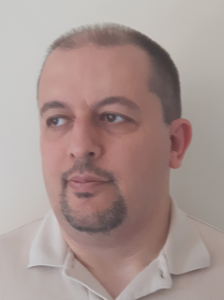Tutorial #1: Softwarization and Virtualization in 5G and Beyond Mobile Networks – From Theory to Practice
Presenters: Fabrizio Granelli (Univ. of Trento, Italy), Frank Fitzek (TU Dresden, Germany)
Time (half-day):
Abstract:
A big step lies ahead when moving from today’s 4G cellular networks to tomorrow’s 5G network. Today, the network is used for content delivery, e.g. voice, video, data. Tomorrow, the 5G network (and possibly beyond that) will be fully softwarized and programmable, with new degrees of freedom.
The aim of the tutorial is to illustrate how the emerging paradigms of Software Defined Networking, Network Function Virtualization, and Information-Centric Networking will impact on the development of future systems and networks, both from the theoretical/formal as well as from the practical perspective. The main focus will be on mobile networks, i.e. 5G and beyond.
The tutorial will provide a comprehensive overview of the individual building blocks (software-defined networking; network function virtualization; information-centric networks) enabling the concept of computing in future networks, starting from use cases and concepts over technological enablers (Mininet; Docker) and future innovations (machine learning; network coding; compressed sensing) to implementing all of them on personal computers.
Practical hands-on activities will be proposed, with realistic use cases to bridge theory and implementation by several examples, through the usage of a pre-built ad-hoc Virtual Machine (ComNetsEmu) that can easily be extended for new experiments. The instructions to download the Virtual Machine will be provided in advance of the event.
The main objective of the tutorial will be to expose attendees to the most recent technologies in the field of networking and teach them how to use them in a real setup in the “hands-on” session.
A related book written by the two presenters “Computing in Communication Networks” (published in 2020 by Elsevier) provides an in-depth description of the concepts and hands-on activities presented in the tutorial, to enable interested attendees to learn additional details on the reviewed technologies.
Instructions for attendees:
Attendees of the tutorial are recommended to install the VM for the hands-on activities following the instructions indicated here:
https://git.comnets.net/public-repo/comnetsemu
Tutorial outline:
– 5G requirements and expectations
– Network Slicing
– Mobile Edge Cloud
– Content Distribution
– Q&A session
– ComNetsEmu: A Lightweight Emulator merging mininet and docker environments
– Useful networking tools
– Software-Defined Networking (with a hands-on lab on OpenFlow and Ryu)
– Network Function Virtualization (with a hands-on lab on docker)
– How to implement network slicing
– Making it more interesting: how to implement service migration
– Introduction to available scenarios in ComNetsEmu (Mobile Computing, Network Coding, Machine Learning examples)
– Final Q&A session
CV of Presenters:
 Fabrizio Granelli is an Associate Professor at the Dept. of Information Engineering and Computer Science (DISI) of the University of Trento (Italy). From 2012 to 2014, he was the Italian Master School Coordinator in the framework of the European Institute of Innovation and Technology ICT Labs Consortium. He was Delegate for Education at DISI in 2015-2016 and he is currently a member of the Executive Committee of the Trentino Wireless and Optical Testbed Lab. He was IEEE ComSoc Distinguished Lecturer for 2012-15, IEEE ComSoc Director for Online Content in 2016-17, and IEEE ComSoc Director for Educational Services in 2018-19. Prof. Granelli is the coordinator of the research and didactical activities on computer networks within the degree in Telecommunications Engineering. He was an advisor for more than 80 B.Sc. and M.Sc. theses and 8 Ph.D. theses. He is the author or co-author of more than 250 papers published in international journals, books, and conferences in networking, with particular reference to performance modeling, cross-layering, wireless networks, cognitive radios and networks, green networking, and smart grid communications.
Fabrizio Granelli is an Associate Professor at the Dept. of Information Engineering and Computer Science (DISI) of the University of Trento (Italy). From 2012 to 2014, he was the Italian Master School Coordinator in the framework of the European Institute of Innovation and Technology ICT Labs Consortium. He was Delegate for Education at DISI in 2015-2016 and he is currently a member of the Executive Committee of the Trentino Wireless and Optical Testbed Lab. He was IEEE ComSoc Distinguished Lecturer for 2012-15, IEEE ComSoc Director for Online Content in 2016-17, and IEEE ComSoc Director for Educational Services in 2018-19. Prof. Granelli is the coordinator of the research and didactical activities on computer networks within the degree in Telecommunications Engineering. He was an advisor for more than 80 B.Sc. and M.Sc. theses and 8 Ph.D. theses. He is the author or co-author of more than 250 papers published in international journals, books, and conferences in networking, with particular reference to performance modeling, cross-layering, wireless networks, cognitive radios and networks, green networking, and smart grid communications.
 Frank H. P. Fitzek is a Professor and chair of the communication networks group at Technische Universität Dresden coordinating the 5G Lab Germany. He received his diploma (Dipl.-Ing.) degree in electrical engineering from the University of Technology – Rheinisch-Westfälische Technische Hochschule (RWTH) – Aachen, Germany, in 1997 and his Ph.D. (Dr.-Ing.) in Electrical Engineering from the Technical University Berlin, Germany in 2002 and became Adjunct Professor at the University of Ferrara, Italy in the same year. In 2003 he joined Aalborg University as Associate Professor and later became Professor. He co-founded several start-up companies starting with acticom GmbH in Berlin in 1999. He has visited various research institutes including the Massachusetts Institute of Technology (MIT), VTT, and Arizona State University. In 2005 he won the YRP award for the work on MIMO MDC and received the Young Elite Researcher Award of Denmark. He was selected to receive the NOKIA Champion Award several times in a row from 2007 to 2011. In 2008 he was awarded the Nokia Achievement Award for his work on cooperative networks. In 2011 he received the SAPERE AUDE research grant from the Danish government and in 2012 he received the Vodafone Innovation price. His current research interests are in the areas of wireless and mobile 5G communication networks, mobile phone programming, network coding, cross-layer as well as energy-efficient protocol design and cooperative networking.
Frank H. P. Fitzek is a Professor and chair of the communication networks group at Technische Universität Dresden coordinating the 5G Lab Germany. He received his diploma (Dipl.-Ing.) degree in electrical engineering from the University of Technology – Rheinisch-Westfälische Technische Hochschule (RWTH) – Aachen, Germany, in 1997 and his Ph.D. (Dr.-Ing.) in Electrical Engineering from the Technical University Berlin, Germany in 2002 and became Adjunct Professor at the University of Ferrara, Italy in the same year. In 2003 he joined Aalborg University as Associate Professor and later became Professor. He co-founded several start-up companies starting with acticom GmbH in Berlin in 1999. He has visited various research institutes including the Massachusetts Institute of Technology (MIT), VTT, and Arizona State University. In 2005 he won the YRP award for the work on MIMO MDC and received the Young Elite Researcher Award of Denmark. He was selected to receive the NOKIA Champion Award several times in a row from 2007 to 2011. In 2008 he was awarded the Nokia Achievement Award for his work on cooperative networks. In 2011 he received the SAPERE AUDE research grant from the Danish government and in 2012 he received the Vodafone Innovation price. His current research interests are in the areas of wireless and mobile 5G communication networks, mobile phone programming, network coding, cross-layer as well as energy-efficient protocol design and cooperative networking.
Tutorial #2: SRv6 and the Network Programming Model Hands-On tutorial
Presenters: Prof. Stefano Salsano (University of Rome Tor Vergata, Italy)
Time (half-day):
Abstract:
Segment Routing over IPv6 (SRv6) is an architecture based on the source routing paradigm that seeks the right balance between distributed (network-wide) intelligence and centralized (controller-based) programmability. Using SRv6, network devices have complete control over the forwarding paths and the network functions to be applied to packets, by combining simple network instructions. Moreover, applications can become SRv6 aware and gain control over the network-wide forwarding and processing of packets. SRv6 technology has been implemented in hardware by different vendors (e.g. CISCO, Huawei, Barefoot), in software (e.g. Linux kernel networking) and in software with I/O acceleration (e.g. FD.io Vector Packet Processing using DPDK). Several large scale deployments of SRv6 have been rolled out in 2019 (including Softbank, Iliad, ChinaTelecom, China Unicom), see https://tools.ietf.org/html/draft-matsushima-spring-srv6-deployment-status. This tutorial will provide a quick introduction to SRv6 architecture and protocols and will illustrate the design and implementation of SRv6 services with hands-on examples. The hands-on part will be based on the open-source SRv6 ecosystem developed in the ROSE project: https://netgroup.github.io/rose/
Instructions for attendees:
It is suggested to download a Virtual Machine to follow the hands-on parts in advance. The tutorial VM will be available one week in advance on the web site of the ROSE project:
https://netgroup.github.io/rose/rose-vm.html.
The VM will be available for Virtualbox and VMWare hypervisors.
Tutorial outline:
(2.5 hours tutorial)
SRv6 Fundamentals:
– Segment Routing Header (SRH)
– SRv6 network programming and basic functionsSRv6 Application Examples:
– Service Chaining / VPN / SR Traffic Engineering
Hands-on Section on ROSE tutorial VM:
– Introduction to the IPv6 emulated network in Mininet
– Implementation of SRv6 tunnels on Linux kernel
– SRv6 implementation of SD-WAN overlay service
– Performance evaluation of SRv6 node functions, the definition of No Drop
CV of Presenters:
 Stefano Salsano is an Associate Professor in the Electronic Engineering Dept. of University of Rome Tor Vergata. Since July 2018 he is the Coordinator of the Master’s Degree in “ICT and Internet Engineering” and of the Bachelor Degree “Ingegneria di Internet”. He received his Laurea degree in 1994 (Univ. of Rome Tor Vergata) and his Ph.D. in 1998 (Univ. of Rome “La Sapienza”). From 1997 to 2000 he has been with CoRiTeL, a research institute on telecommunications, where he has been the coordinator of the research activities in the IP related area. In November 2000 he joined the University of Rome Tor Vergata as Assistant Professor. He participated in 16 research projects funded by the EU, being Work Package leader or unit coordinator in 8 of them, technical coordinator in two of them (Simple Mobile Services, SCISSOR), and project coordinator in one (Superfluidity). He has been principal investigator in several research and technology transfer contracts funded by industries. He has led the development of several testbeds and demonstrators in the context of EU projects, most of them released as Open Source software. His current research interests include Network Function Virtualization, Software Defined Networking, Cybersecurity, Mobile, and Pervasive Computing. He is co-author of an IETF RFC and of more than 160 papers and book chapters. He has been the General Chair of the 14th International Conference on Network and Service Management (CNSM 2018). Since 2017 he is cooperating with Cisco Systems on Segment Routing and he has received two Research Grants from Cisco Systems.
Stefano Salsano is an Associate Professor in the Electronic Engineering Dept. of University of Rome Tor Vergata. Since July 2018 he is the Coordinator of the Master’s Degree in “ICT and Internet Engineering” and of the Bachelor Degree “Ingegneria di Internet”. He received his Laurea degree in 1994 (Univ. of Rome Tor Vergata) and his Ph.D. in 1998 (Univ. of Rome “La Sapienza”). From 1997 to 2000 he has been with CoRiTeL, a research institute on telecommunications, where he has been the coordinator of the research activities in the IP related area. In November 2000 he joined the University of Rome Tor Vergata as Assistant Professor. He participated in 16 research projects funded by the EU, being Work Package leader or unit coordinator in 8 of them, technical coordinator in two of them (Simple Mobile Services, SCISSOR), and project coordinator in one (Superfluidity). He has been principal investigator in several research and technology transfer contracts funded by industries. He has led the development of several testbeds and demonstrators in the context of EU projects, most of them released as Open Source software. His current research interests include Network Function Virtualization, Software Defined Networking, Cybersecurity, Mobile, and Pervasive Computing. He is co-author of an IETF RFC and of more than 160 papers and book chapters. He has been the General Chair of the 14th International Conference on Network and Service Management (CNSM 2018). Since 2017 he is cooperating with Cisco Systems on Segment Routing and he has received two Research Grants from Cisco Systems.


